The Steadysun Team
Table of contents
Wind energy plays a central role in the rapidly evolving renewable energy landscape. While nations and companies are pushing for greener grids, the variability of wind energy poses a particular challenge, especially in the area of electricity trading. Accurate forecasting of wind energy is essential for effective market participation and strategy formulation. This article explores why accurate forecasting is crucial in this context and how it changes the dynamics of electricity trading.
The role of wind energy forecasting in power markets
Mitigating supply variability
Wind energy is a thoroughly variable energy source, and its output can fluctuate greatly depending on weather conditions. These fluctuations can lead to significant challenges in balancing supply and demand.
Accurate forecasting allows energy producers and traders to predict the availability of wind energy more reliably, reducing the uncertainty associated with integrating wind energy into the electricity grid.
Effective forecasting helps to plan generation from other sources, maintaining a steady energy supply and stabilizing the grid.
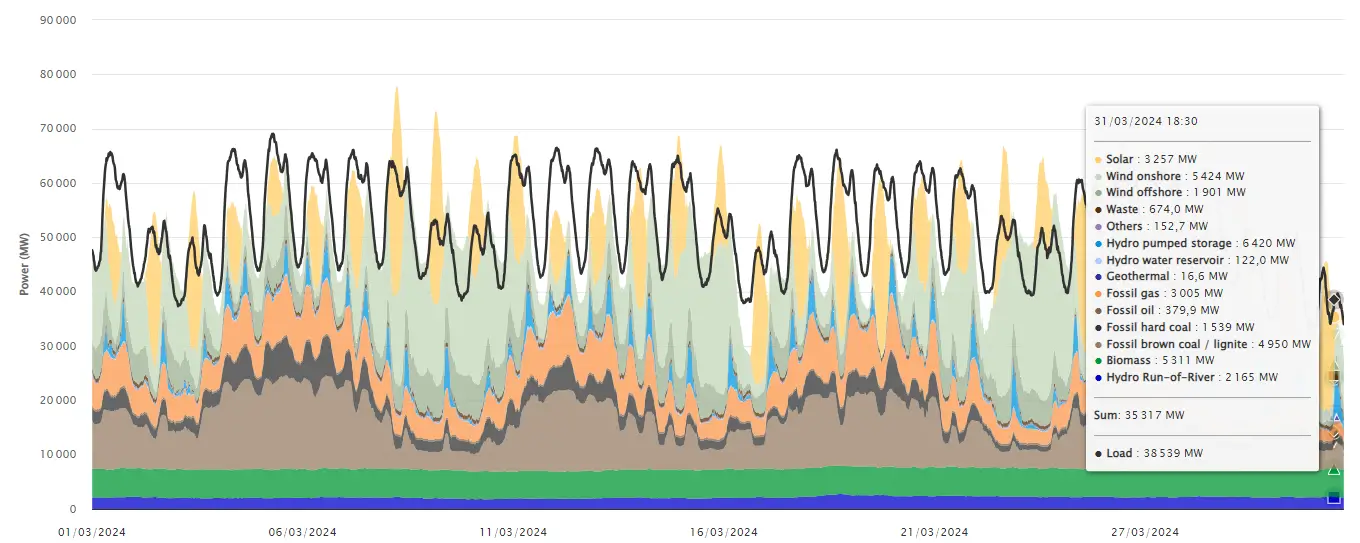
Public net electricity generation in Germany in March 2024 (Source: Energy-Charts.info).
Enhancing trading strategies
For electricity traders, volatility represents both a risk and an opportunity. Accurate wind forecasts allow traders to develop more effective trading strategies and adjust their positions based on the expected surplus or shortage of wind energy.
This capability is critical, especially in markets such as the day-ahead and intraday markets, where knowing when wind energy production will peak or fall can significantly influence buying and selling decisions.
With reliable forecasting tools, traders can minimize losses and profit from price fluctuations caused by changes in wind energy production.
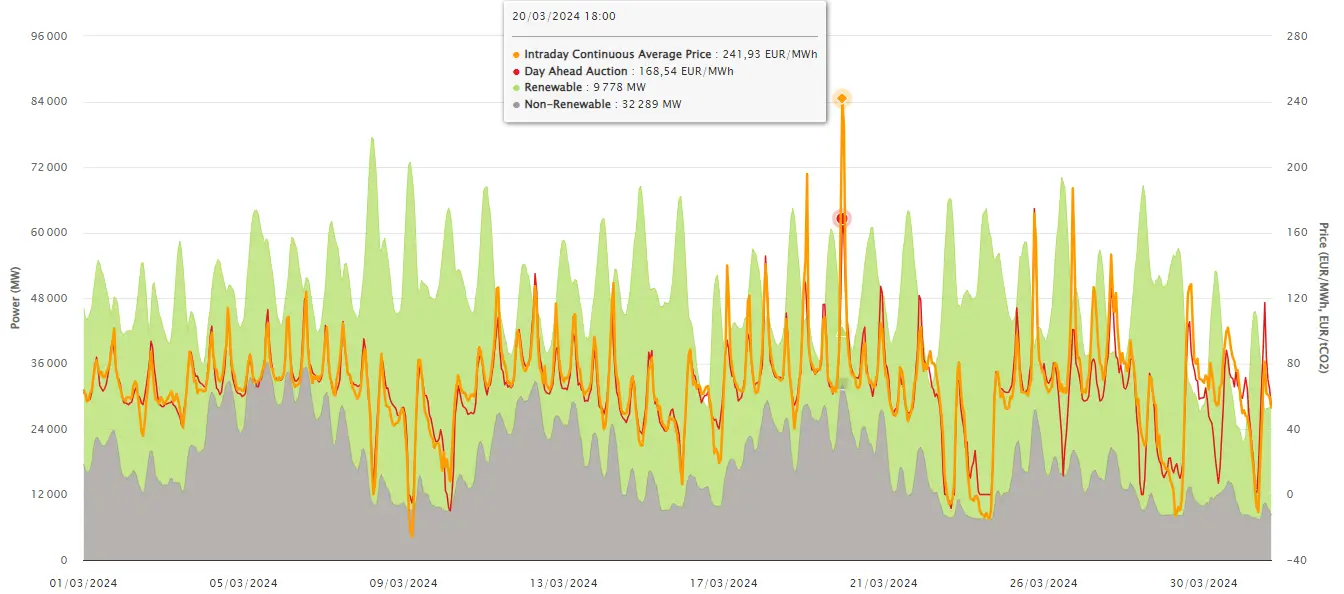
Electricity production and spot prices in Germany in March 2024 (Source: Energy-Charts.info).
How to generate accurate wind energy forecasts?
Modeling and simulation techniques
Wind forecasting uses advanced meteorological models and simulation techniques that integrate data from various sources, enhancing the accuracy and reliability of predictions.
At Steadysun these forecasts are simulated using our SteadyMet forecasting product. This product integrates inputs from up to 15 different Numerical Weather Prediction (NWP) models, depending on site location. This extensive use of multiple NWP models ensures that the forecasts are not only comprehensive but also robust and probabilistic, capturing a wide array of atmospheric phenomena and potential weather scenarios.
In addition, SteadyMet can be configured to operate at a very high resolution (1 km) utilizing the Weather Research and Forecasting (WRF) model. The WRF model is renowned for its precision and ability to deliver accurate weather forecasts at a local scale.
This high-resolution data helps create accurate, site-specific forecasts that are essential for effective energy trading.
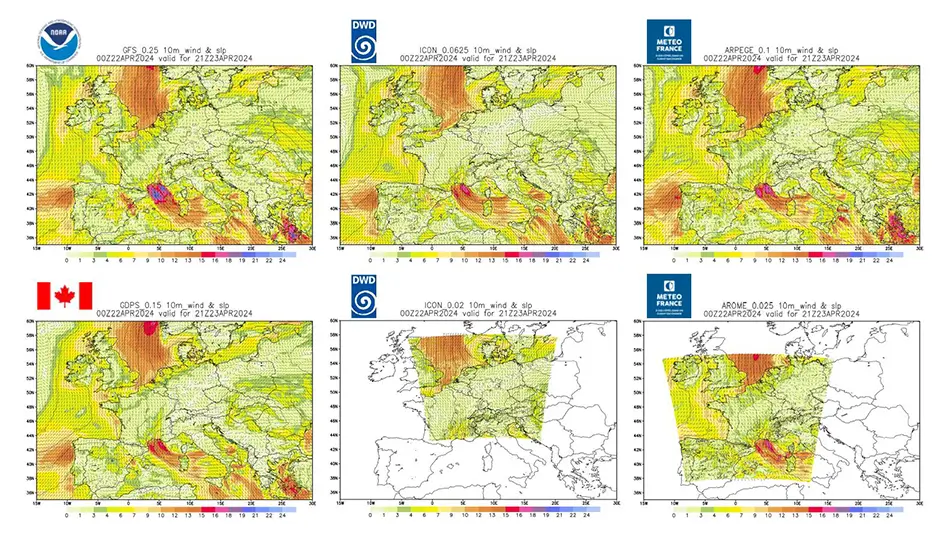
Example of 10m wind speed (shaded), direction (barb) and sea level pressure (contour) day-ahead forecasts over Western Europe from 6 different NWP models: GFS (NOAA), GDPS (CMC), ICON-EU and ICON-D2 (DWD), Arpege and Arome (Météo-France).
Machine learning and AI
The development of machine learning and artificial intelligence has raised the accuracy of wind forecasting to a new level. AI algorithms analyze historical and real time data patterns to improve forecast accuracy over time.
These systems can adapt to new information and refine their forecasts based on actual results, continuously improving forecasting performance.
For power traders, this means they have access to forecasts that are increasingly accurate and provide a clearer view of future market conditions.
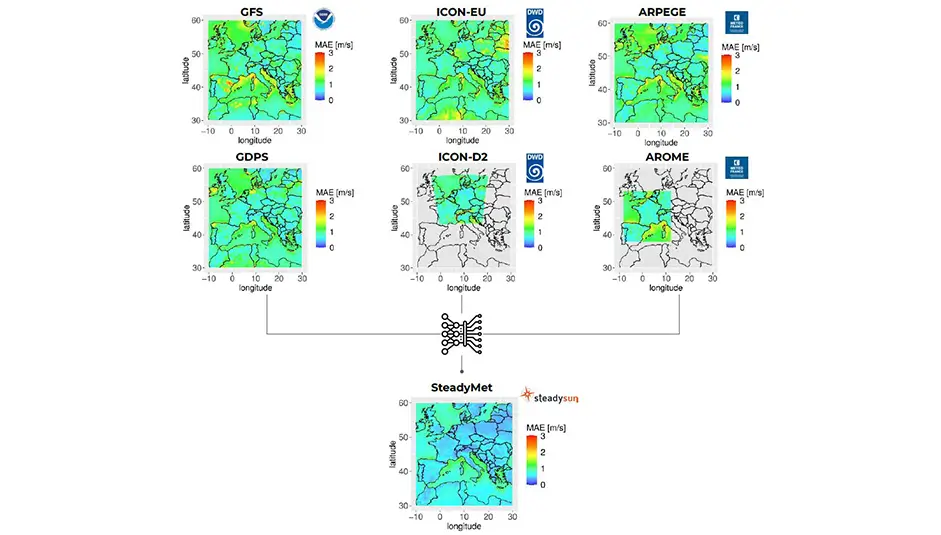
SteadyMet, our AI-based multi-model product, consistently outperforms each individual NWP model. It shows significant improvements ranging from 0.29 to 0.41 m/s (a boost of +24% to +39%) in 10 m wind speed over a 3-month period.
*Mean Absolute Errors (MAE) calculated using Copernicus ECMWF ERA5 reanalysis data.
From wind to power forecasts
Modeling electrical power from wind sources involves analyzing factors such as site-specific wind variations that directly affect power generation.
The characteristics of wind turbines, such as position, rotor diameter, turbine height, and power curve, are critical to predicting energy output effectively. These features directly influence a turbine’s efficiency and total energy production.
Additionally, since wind speeds vary at different heights, it is important to adjust wind speed data to the turbine’s height for more accurate power output forecasts.
Finally, accounting for energy losses due to the wake effect — where downstream turbines face more turbulent and slower wind — is essential for detailed modeling of wind farm output.
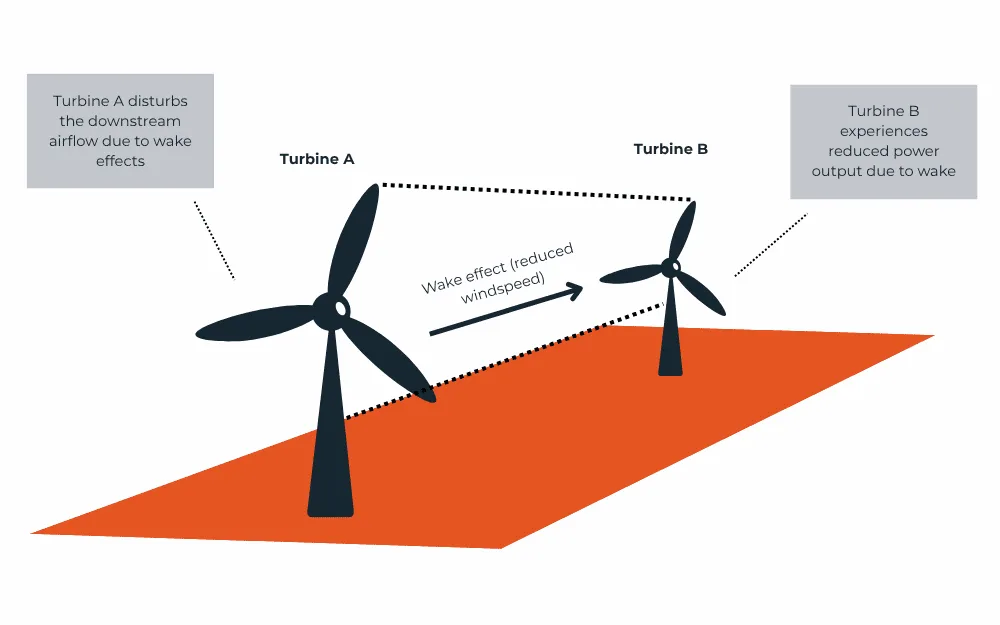
The wake effect is a crucial component in modeling energy output from wind farms.
The accuracy of Steadysun’s wind power forecasts
The error, estimated using the normalized Mean Absolute Error (nMAE) [1], of our day-ahead forecasts typically ranges between 7.5% and 10% on an annual average, depending on the location of the wind plant. It is more commonly below 9%.

Example of 7-day ahead probabilistic wind power forecasts generated on 15 November 2023 for a 20.4 MW onshore wind farm located in the Pacific region.

Example of 6-hours ahead probabilistic wind power forecasts over 3 weeks for the same wind farm.
Find out more by testing the accuracy of our wind energy forecasts.
To learn more, read our section about wind and solar forecasting for trading.
1. The normalized Mean Absolute Error (nMAE) is calculated based on half-hour ranges. This is consistent with the usual functioning of the electricity network. To quantify the forecasts or the daily production, we consequently have a set of 48 values corresponding to 48 time slots of 30’ each (1rst value = average between 00.00 am and 00.30 am, 2nd value = averages between 00.30 am and 01.00 am and so on).
Powers are normalized by the peak power in order to allow comparisons between a power plant and another one (see equation 1).
A value for the daily nMAE is then calculated for each day and for each year (see equations 2 and 3).
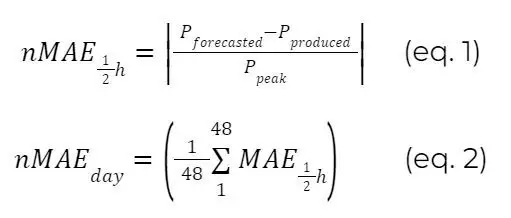
Where Pforecasted and Pproduced are the average power planned and realized on the considered 30’ time slot, Ppeak is the peak power and “48” is the number of half an hour time slots of the day.
The accuracy of the forecast system on a given power plant will then be estimated by averaging the daily MAE’s on all the available days (see equation 3).




